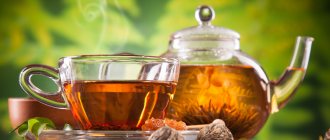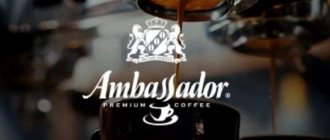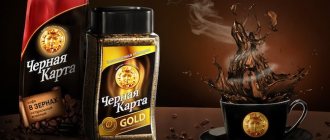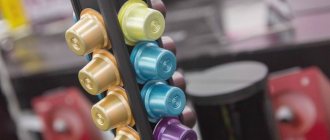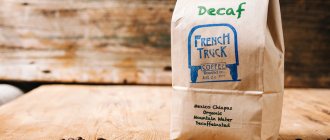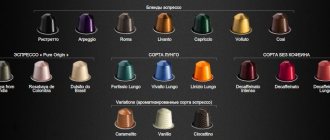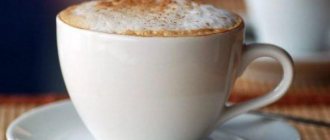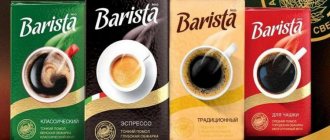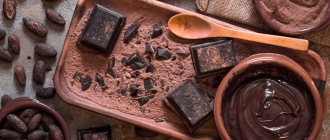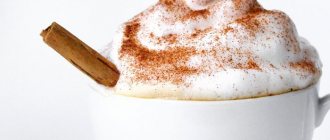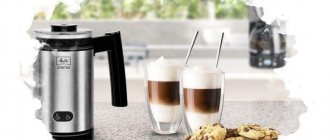“Beat the eggs until they form a strong foam” is a phrase that can be found in almost every culinary recipe. For some, nothing special, but for some, real torment begins with this line. It seems like you are doing everything according to the recipe, but the “stubborn” eggs are sometimes beaten, sometimes not...
© Depositphotos
To help desperate housewives “So Simple!” put together all the secrets of fluffy egg foam. To ensure that your baked goods are always amazingly fluffy, read and remember.
How to choose eggs to scramble
You need to know that you won’t get a thick protein foam if you don’t buy fresh eggs. If this product was in the store for a long time, it could begin to deteriorate, so you can forget about high-quality and stable foam.
The freshness of the eggs will be revealed directly during the beating process, as the foam will become liquid and viscous. But there is another side to the coin. It is also not recommended to use freshly laid eggs. Although they are fresh, they are still warm, which will negatively affect the quality of the protein foam.
The temperature for beating yolks and whites varies. If the yolks are beaten at any temperature (even when warm), then the whites must be well cooled. But you shouldn't put eggs in the freezer. You can get the opposite reaction: the protein will freeze and there will be no use from it.
Classification of mechanical and thermal processes for processing raw materials
The technology for the production of dishes and culinary products in public catering establishments has recently undergone significant changes, mainly due to the development of new production technologies. Nevertheless, knowledge of classical food processing technologies is still the basis and main operating principle of both technological equipment and a specialist, cook or culinary specialist.
Classical technology includes two main stages - primary processing of raw materials, the task of which is to obtain semi-finished products, and subsequent heat treatment, which most semi-finished products are subjected to in order to bring food products to culinary readiness.
Technological processes for processing food products are usually divided into the following groups: mechanical, hydromechanical, thermal, biochemical and chemical.
Mechanical include processes that are based on mechanical action on the product: sorting, grinding, mixing, beating, pressing, dosing and molding.
Hydromechanical include processes that are based on a hydromechanical effect on the product being processed: washing, soaking, sedimentation, filtration.
Thermal include processes whose driving force is the temperature difference between interacting media: heating, cooling (in natural conditions and using artificial cold), evaporation, condensation.
Biochemical include processes associated with hydrolysis, oxidation, glycolysis and fermentation.
Chemical include processes of exposure of a product to chemicals that cause certain reactions (loosening, sulfitation).
The listed processes are accompanied by various changes in the physical, chemical and organoleptic properties of the processed products.
MECHANICAL PROCESSES
SORTING
There are two types of product separation: sorting by quality depending on organoleptic properties (color, surface condition, consistency) and separation by size into separate fractions (sorting by grains, grains and shape).
In the first case, the operation is carried out by organoleptic examination of the products, in the second - by sifting.
Sorting by sifting (flour, cereals) is used to remove foreign impurities. When sifting, product particles whose sizes are smaller than the sieve openings pass through the holes (passage), and particles with sizes larger than the sieve openings remain on the sieve as waste (drain).
For sifting, the following are used: metal sieves with stamped holes; wire sieves made of round metal wire, as well as sieves made of silk, nylon pygey and other materials.
Silk sieves are highly hygroscopic and wear out relatively quickly. Nylon is little sensitive to changes in temperature, relative humidity and sifted products; The strength of nylon threads is higher than silk.
Sorting of products based on size (calibration) is used in the process of primary processing of potatoes and root crops in order to reduce their waste and increase the productivity of machines during mechanized cleaning.
Modern large processing complexes use the latest achievements of the electrochemical industry, including optical sensors calibrated to perceive certain particle sizes, or even their color. Thus, in large kitchen factories, production lines are installed for sorting potatoes, carrots, fruits, berries, and mushrooms. A special conveyor system and pneumatic blades screen the product according to specified parameters, removing it from the main moving belt conveyor.
GRINDING
Grinding is the process of mechanically dividing the processed product into parts for the purpose of its better technological use. Depending on the type of raw material and its structural and mechanical properties, mainly two grinding methods are used: crushing and cutting.
Products with low moisture (grains, crackers, some spices) are crushed; products with high moisture (vegetables, fruits, meat, fish, etc.) are cut.
Crushing in order to obtain coarse, medium and fine grinding is carried out on grinding machines, fine and colloidal - on special cavitation and colloid mills.
During the cutting process, the product is divided into parts of a certain or arbitrary shape (pieces, layers, cubes, sticks, etc.), as well as the preparation of finely ground types of products (minced meat, etc.).
Chopping vegetables, root vegetables, and fruits into pieces of certain sizes and shapes is done using vegetable cutting machines (or “vegetable cutters”), the working parts of which are knives of various types that cut the product in two mutually perpendicular directions. Meat grinders and cutters are used to grind meat and fish.
To grind hard products with high mechanical strength (for example, bones), band and circular saws are used.
The raw materials are crushed and converted into a mass of uniform structure using grating working parts. This method is used in the production of starch and juices. For this purpose, special grating machines are used or this process is carried out manually using ordinary and mechanized graters.
To grind products brought to readiness in order to obtain a puree-like consistency, grinding machines are used, which have a combined effect on the product: crushing it with blades and simultaneous pressing through the holes of the sieve, the edges of which additionally cut the product.
Depending on the type of product, sieves with cell openings with a diameter of 1.5 to 3 mm are recommended.
MIXING
The preparation of a number of culinary products (salads, vinaigrettes) requires mechanical mixing of dissimilar products in order to obtain a homogeneous mass. The duration of mixing of mixtures determines their consistency and physical properties.
Mixing promotes the intensification of thermal biochemical and chemical processes due to an increase in surface interaction between the particles of the mixture.
When preparing plastic masses, for example, kneading dough of various consistencies, a number of components are mixed: water, flour, yeast, sugar, fat, etc. With further mixing, the dough acquires certain physicochemical properties associated with biochemical processes occurring as a result of interaction components.
Mixing processes are also used in the production of minced meat and cutlet mass from crushed raw materials (meat, fish, vegetables) after adding a number of components to them.
Mixing is carried out in planetary mixers or special mixing drums. This is how the meat and marinade are mixed in drums to obtain a ready-made semi-finished shish kebab. Some manufacturers produce mixing drums for mixing and subsequent dosing of European and Korean salads.
PRESSING
Processes of pressing products are used mainly to separate them into two fractions: liquid (juices) and dense (pulp).
During the pressing process, the cellular structure of the product is destroyed, resulting in the release of juice from the cells. The latter is used for making jelly, jelly, monsoon, and various sauces. The juice yield depends on the degree of compression of the product during the pressing process. Pressing is carried out using continuous screw presses (extractors of various designs).
DOSING AND FORMING
The production of products from public catering enterprises and their distribution are carried out in accordance with GOSTs or technical specifications or internal technological standards and collections of recipes, with standards for the laying of raw materials and the yield of finished products (weight, volume). In this regard, the processes of dividing the product into portions (dosing) and giving them a certain shape (molding) are essential. In public catering establishments, the dosing and molding processes are carried out manually or using machines: cutlet-forming machines, for preparing dumplings and dumplings, donuts, etc.
Today, volumetric dispensers for dosing pasty products, screw dispensers for dosing liquid products, beverage bottling plants and others are also actively used.
CHEATING
Mechanical beating of some products (egg whites, cream, etc.) results in foam of varying dispersion. These include, for example, protein creams, whipped cream, some types of sweet dishes - mousses, etc. Whipping occurs in special mixers or whipping machines.
HYDROMECHANICAL PROCESSES
The hydromechanical effect on products consists of removing contaminants from their surface and reducing microbiological contamination, as well as soaking some types of products in order to intensify heat treatment processes.
WASHING AND SOAKING
Almost all products entering a catering establishment are washed to remove contaminants and microorganisms from their surface. Root and tuber crops are washed mechanically in washing machines, as well as manually in baths with running water. Some types of products (meat carcasses, half-carcasses) are washed using gushing rubber brushes and special showering devices.
The process of soaking foods before cooking (for example, legumes, dried fruits, vegetables) speeds up their preparation.
SEDIMENTATION, FILTERING
As a result of a number of technological operations, suspensions are obtained - mixtures of two (or more) substances, of which one (solid) is distributed in the other (liquid) in the form of particles of varying dispersion that are in suspension.
Suspensions include, for example, starch milk obtained during the production of starch, or fruit juice containing pulp particles of various sizes and shapes. Filtration and sedimentation techniques are used to separate suspensions into liquid and solid parts.
Filtration is the process of separating suspensions by passing them through a porous partition (fabric, sieve) capable of retaining suspended particles and allowing the filtrate to pass through. This method ensures almost complete liberation of liquid from suspended particles.
Sedimentation is the process of separating solid or liquid particles from suspensions and emulsions under the influence of gravity (in settling tanks) or under the influence of centrifugal force (in a centrifuge, hydrocyclone and other devices). After precipitation is complete, the clarified liquid and precipitate are isolated.
THERMAL PROCESSES
HEATING
Heat treatment of products is the main technique in the technological process of producing culinary products. Heating a product using various media that transfer heat causes changes in its structural-mechanical, physico-chemical and organoleptic properties, which together determine the readiness of the product, consistency, color, smell, taste, characterizing the degree of culinary readiness of the product.
Heat treatment of products is carried out in various ways: immersion in a liquid medium; treatment with steam-air and steam-water mixtures, live steam;
contact heating; heating in the field of microwave currents;
convection method;
infrared irradiation and by combining the above methods.
Heating products to a certain temperature (usually not lower than 80° C) is also of great sanitary and hygienic importance. Food products, both animal and plant origin, are almost always contaminated with microorganisms. Heating them during heat treatment, although it does not ensure complete sterility of the product, has a detrimental effect on most mold and non-spore bacteria, and also causes the transition of spore-forming bacteria into an inactive form, thereby ensuring their complete harmlessness to the human body.
COOLING
Cooling is the release of heat from a product to the environment. Cooling can be carried out under natural and artificial conditions.
Thus, to preserve the quality of products (primarily perishable) supplied to public catering establishments, lower storage temperatures are required, at which the development of microorganisms is suppressed and undesirable biochemical processes occurring in the products themselves are slowed down.
Cooling is also used to create modes necessary for the implementation of certain technological processes; beating foam, gelatinizing, rolling out puff pastry, etc.
Cooling occurs in refrigerated rooms (cooling rooms), in blast cooling and freezing cabinets, in water chillers (tumble chilling system), in vacuum bags and others.
CLASSIFICATION OF HEAT TREATMENT TECHNIQUES
The main methods of heat treatment of products are boiling and frying, each of which is characterized by a wide variety of thermal conditions. The main indicators of the processes of heat treatment of products are: the heating medium, the ratio of the mass of the product and the heating medium, the temperature regime during the heat treatment process.
COOKING
During the cooking process, products are heated in a liquid medium (water, milk, etc.) or in a steam atmosphere. In this case, the ratio of product and liquid must be at least 1:1. There are two cooking modes. In the first mode, the liquid is heated to a boil, after which the heating is reduced and further heat treatment of the product is carried out at low boiling (temperature about 95-98 ° C), maintaining this mode for the entire time required to bring the product to readiness.
In the second mode, the liquid is heated to a boil, then the heat is stopped and the product is brought to readiness using the accumulated heat.
POWERING AND STEAMING
These methods are mainly used for cooking foods with high moisture content.
Some products are poached without adding liquid - in their own juice, released from the product when it is heated.
During the poaching process, the lower part of the product is immersed in a boiling environment, and the upper part is exposed to steam. The latter, in contact with food products, condenses, releasing latent heat of vaporization, and heats them, bringing them to a state of culinary readiness. Cooking of products can be carried out both in open and closed volumes, poaching - only in closed volumes.
This process is also used when cooking foods with live steam. It is carried out in special steam ovens of various designs; The most effective designs are those with forced circulation of steam.
Cooking in a water bath. The technological process of preparing some dishes should be carried out at a temperature not exceeding 60-90 ° C, maintaining it for the entire period of culinary processing. For this purpose, a water bath with a heating medium thermostat is used. Stovetop dishes are also used: to do this, pour liquid (water) into one of the vessels, heat it to the required temperature and place the vessel with the product in it.
PRESSURE AND VACUUM COOKING
Cooking processes can be carried out at atmospheric pressure, at excess pressure using autoclaves, and at reduced pressure (in vacuum devices).
When using increased pressure, the processing temperature increases, which speeds up the cooking process. However, such intensification of processing is not always technologically feasible.
In addition, the use of high temperatures (about 115-130 ° C), along with accelerating the process of heat treatment of products, leads to a deterioration in the quality of dishes and their nutritional value.
The use of vacuum devices makes it possible to speed up heat treatment processes at ambient temperatures below 100° C and maintain the high quality of the processed products.
FRYING
The following frying techniques are distinguished: on a frying surface with a small amount of fat; the fat is preheated to a high temperature;
on an open frying surface without fat;
in a closed oven chamber in a shallow no-vessel with a small amount of heated fat;
by immersion in fat (deep frying) - on an open surface with a large amount of heated fat placed in a frying bath.
A type of frying in a closed oven chamber is baking flour products (semi-finished dough products).
When frying on an open surface, heated fat is used as a heat transfer medium; due to its low thermal conductivity, fat protects the product from local overheating and promotes uniform heating of the entire surface.
During the initial period of frying, melted fat ensures uniform heating of the surface of the product to a temperature not exceeding 100 ° C. In this case, the surface LAYER of the product is dehydrated due to the evaporation of moisture and the process of thermal and moisture conductivity, which causes the transfer of moisture in the direction of the heat flow - from the surface layer of the product to the center. Further heating of the dehydrated surface layer of the product causes thermal decomposition of the substances included in its composition, with the formation of new chemical substances (some volatile), which have a specific aroma and fried taste characteristic of this type of product.
This process begins at approximately 105°C and intensifies with further increases in temperature. Heating above 135° C leads to a deterioration in the organopoleptic characteristics of the product due to the formation of substances with a burnt odor and taste.
Frying on an open frying surface
Frying in a thin layer of fat
The product is placed on the heated fat, the surface of which is quickly dehydrated and covered with a crust. To obtain a crust on both sides, the product is turned over.
Heat is transferred to the inside of the product during the frying process due to the thermal conductivity of the product itself.
Raw products are fried until fully cooked or half-ready (frying), followed by additional heat treatment. The temperature used in this frying method can vary depending on the type of product.
Roasting without fat
Frying without lubricating the frying surface with fat is carried out when preparing products from liquid dough, for example, when frying a pancake strip on a fryer with a rotating drum; in this case, frying occurs due to the fat pressed out of the dough.
Frying by immersion in fat (deep frying)
The product is completely immersed in a frying bath with heated fat, which causes the formation of a crust on the entire surface of the product. In this case, heat transfer from the heated medium to the product is carried out by thermal conductivity. Deep frying can be done using the floating or submerged method, and the productivity of the second method is much higher. Deep frying is widely used for preparing products such as potatoes, fish and others, as well as various types of flour products (pies, donuts), and can be carried out using batch and continuous machines.
Frying in an oven chamber (radiation-convection method)
The product is poured with melted fat and placed in an oven, in which the product is heated mainly (80-85%) due to radiation from the heated surfaces of the chamber and partly due to the thermal conductivity of the hot hearth and convection of moving air flows.
Baking of dough products is also carried out using the radiation-convection method - in fryers, baking ovens and bakery ovens - at different temperature conditions depending on the type of semi-finished product.
Roasting in the field of infrared radiation
The product (meat, fish) is fried over an open fire (without generating smoke), placing it on a metal grate, previously greased. After frying
On one side the grill is turned over and the product is fried on the other side. You can also thread the Product onto a skewer or skewer and fry until done, turning slowly over a heat source (kebabs). This method is used when frying a product in special devices - electric grills, where it is exposed to radiation from electric heating elements.
COMBINED HEAT TREATMENT METHODS
Extinguishing
When stewing almost all types of products, two methods of heat treatment are used: preliminary frying without forming a crust and subsequent poaching with the addition of spices and seasonings. Stewing is carried out in a tightly closed container.
Baking
Before baking, food is boiled, poached or fried until fully cooked or half cooked. Some types of products (fish, lamb) are baked raw for preparing certain dishes.
Basically, the baking technique is used to obtain a crispy crust on the surface of products that have already undergone heat treatment (porridge, pasta, meat, etc.) or half-cooked (natural cutlets, etc.). Baking is done with the addition of products such as eggs, milk, sauces.
AUXILIARY HEAT TREATMENT TECHNIQUES
Auxiliary methods of heat treatment include some operations for removing inedible parts from the surface of products (searing) or giving the products specific properties necessary for subsequent heat treatment (blanching).
Auxiliary techniques also include defrosting foods after storing them in the cold, defrosting and heating finished foods.
singeing
Searing is carried out using gas burners to burn wool, hairs, feathers from the surface of the processed products (heads, limbs of cattle, bird carcasses, etc.). There is no heating of the food.
Blanching (scalding) is a short-term (from 1 to 5 minutes) exposure of food to boiling water or steam.
This technique is used to facilitate subsequent mechanical cleaning of products, destruction of enzymes that have an undesirable effect on products peeled from surface shells, and removal of bitter taste.
Sauteing
Sauteing is the process of heating a product (with or without fat) before cooking it. Sauteing is used to process aromatic roots in order to preserve aromatic substances in fat solutions, as well as to give the roots a special color and taste. Flour is also sauteed, which acquires different properties (shades of color, taste, etc.) depending on the heating temperature.
Temperature control
It is used to preserve first and second courses when distributing at a given temperature, and is also used to deliver ready-made dishes in a hot state to the place of their consumption.
Defrosting (or warming) and reheating
The purpose of defrosting a product received at the enterprise after cold storage is to bring it to a state closest to the original one characteristic of a natural product. The modes used in this case (discussed in the relevant sections of the textbook) provide for minimal loss of product mass while maintaining its quality to the maximum.
A special place is occupied by the process of heating frozen finished products, which combines two operations - defrosting and heating to a certain temperature. To carry out these operations, the traditional heating method is used, heating in a microwave or high frequency electric field, as well as a combined method - defrosting in natural conditions followed by heating in the traditional way or in microwave devices.
The peculiarity of this method is the heating of food products throughout the entire volume due to the ability of the electromagnetic field to penetrate inside the product to a considerable depth.
This method uses the principle of dielectric heating, in which only the product is heated in the microwave chamber. Due to heat loss to the environment, the temperature of the peripheral layers of the product is lower than the central ones and a specific crust does not form on its surface. In terms of its organoleptic properties, a product brought to readiness in a microwave apparatus is close to the product obtained as a result of poaching.
The big advantage of this heating method is the speed of bringing the product to readiness. The duration of heat treatment is reduced by 5-10 times compared to the traditional method. Microwave heating is most effective for preparing second courses, as well as for heating frozen finished products.
With microwave heating, nutrients in products are more fully preserved, burning of products is eliminated, the taste of the prepared food and the sanitary and hygienic working conditions of the service personnel are improved.
The qualitative difference between IR heating and dielectric heating lies in the mechanism of transformation of radiation energy into heat. The IR field penetrates into the product to a shallower depth than the microwave field, as a result of which this type of heating can be considered intermediate between surface and volumetric.
The use of IR heating makes it possible to reduce the duration of the heat treatment process compared to traditional ones, reduce metal consumption and the size of apparatus, automate production and obtain high-quality products.
In combined heat treatment of food products, their volumetric heating is carried out in a microwave field, and tinting is carried out in an IR field. This processing of products allows you to realize the advantages of both heating methods and carry out the cooking process under optimal conditions. Combined microwave and IR heating is carried out in periodic and continuous devices equipped with microwave and IR generators, while the sequence and duration of exposure to the microwave and IR fields on the product can vary depending on the requirements of the technological process.
Modern methods of heat treatment
Modern methods of heat treatment include:
- deep frying in oil;
- processing in various modes in combi ovens;
- processing in microwave convection mode (assembly method);
- processing in vacuum bags using sous-vide technology;
- other
Sokiryansky Fedor
Readers: 139
Pre-preparation of eggs
After choosing the right eggs, we take the following steps: wash them under running water at warm temperature using soap.
This is considered mandatory, since the shell can be contaminated with fluff and pathogens such as salmonella, which can lead to the development of a terrible disease in humans - salmonellosis.
If we take into account the way the egg is born, it is worth assuming that fatty secretions and epithelium remain on its surface, which also inhibits the beating of proteins and leads to a disastrous result.
Choosing a container for whipping egg whites
I would like to note that you must immediately abandon plastic or aluminum utensils. Give preference to glass, earthenware or enamel containers. But if you don’t have one at home and you are used to using a plastic bowl, then you need to give it a perfectly clean look. However, this also applies to other dishes.
The height of the container also plays an important role. Everyone knows that during the beating process, the protein increases in volume more than three times, so if you have small dishes, it will soon begin to “fly out” of it, covering the walls and floor of the kitchen. Therefore, containers must be taken with high edges.
How to separate the white from the yolk
This is also a whole science, which is necessary so as not to remove the shell from your mouth later. For this procedure, you simply need a sharp knife and preferably with a large blade. A miniature knife may not be able to cope with such work efficiently. With a sharp movement of your hand, using a knife, you need to break the egg in half so that one half contains the yolk, and the other contains pure white.
The white is immediately poured into a clean bowl, and the yolk is carefully transferred from one half to the other several times, thereby finally freeing it from the presence of protein. This procedure is done with extreme caution so that the thin film of the yolk is not damaged by the sharp edges of the shell.
Such actions should not be performed in close proximity to a bowl of whites so that the yolk does not get there. If this does happen, take the shell and try to remove the yolk from the container.
Methods for separating yolk from white
The process of whipping egg whites
To make a thick foam from the whites, you need to take one glass of sugar for every four eggs . To form a stable foam, you need to add a little salt to the eggs.
The container must be clean and dry. The whole process can be spoiled by the presence of moisture and grease, so the dishes must not only be thoroughly washed using detergents, but also dried thoroughly. Sugar must be added gradually, in small portions, to achieve the desired result.
Whipping process
- Beating stages Recipes often indicate to what state the whites should be beaten. To understand how long to beat until soft or stiff peaks form, it helps to know what they look like.
© DepositphotosFoam - the proteins are already airy and have a lot of bubbles, but are still liquid. Soft peaks - the whites become white, the bubbles almost disappear, but if you take out the whisk, the cream does not hold its shape and runs off. Hard peaks - the whites take on a creamy appearance, and if you take out the whisk, the foam stretches behind it, forming a stable shape of a sharp peak.
- Egg temperature Contrary to the opinion of a huge number of housewives that it is better to beat eggs chilled, experts still advise beating eggs at room temperature. They have lower surface tension, which makes it easier for bubbles to form. But it is easier to separate the white from the yolk while the egg is cooled.
- Separating the white and yolk Carefully separate the whites from the yolks so that not even a drop of yolk gets into the whites. When separating, use three bowls: one for separating, another for the whites, and a third for the yolks.
© DepositphotosIf, during the process of separating the next egg, the yolk falls into the white, then you will not spoil the already separated whites. Do not use whites that contain yolks for whipping - save them for scrambled eggs or omelettes.
- Foam stage Start beating the whites at minimum speed, gradually increasing it. Make sure that the mixer attachments move around the circumference of the bowl at all times.
© DepositphotosLemon juice will help speed up the process, increase volume and stabilize the air mass. As soon as the white begins to foam, add a few drops of lemon juice or citric acid on the tip of a knife.
When whipping the protein, make sure that it is all involved in the beating process, that is, that the stirrer reaches the bottom of the dish, otherwise the protein may remain liquid at the bottom or on some edge.
- Soft peaks At this stage it's time to start adding sugar. Powdered sugar is ideal because it dissolves the fastest. It is important to add sugar gradually, otherwise the mass will turn white, but you will not be able to get a lush volume.
A single addition of sugar when whipping should not exceed a teaspoon. In this case, you need to pour it not in the center, but slowly along the edge of the bowl or bowl in which you are whisking.
- Steady Peaks With the addition of sugar to the proteins, the mass will gradually become very dense and very stable. Stop the mixer and take out the whisk, if the foam stretches and retains its shape, then this is them, stable peaks.
© Depositphotos - Add the yolk In addition to the protein, many recipes also require a yolk. We add it to the already whipped egg white. When you start beating the yolk with a mixer, immediately add sugar to it, otherwise the mixture will end up with lumps.
How to beat egg whites into a thick foam with a mixer
The taste of meringues, biscuits and other culinary masterpieces directly depends on the quality of whipped proteins.
A good protein foam is obtained using a mixer. In this case, the following recommendations must be observed:
- The white can be extracted from an egg not only with a knife, but also with a thick needle, piercing the egg on both sides. Then, on one side, you need to slowly blow out the protein. With this manipulation, the entire yolk will remain inside the egg.
An alternative way, it is not necessary to do this
